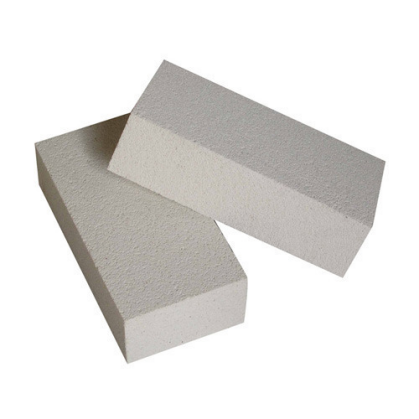The Best Solution For Energy Saving And Reducing CO2 Emission
The Best Solution For Energy Saving And Reducing CO2 Emission
 Tel: +86-532-85717690/85717352/85832089
Tel: +86-532-85717690/85717352/85832089 E-mail: wam@wamcn.net
E-mail: wam@wamcn.net
Regular bricks have a far better thermal conductivity than fire bricks. Due to the ceramic, ferric oxide, and other chemical additions, which absorb heat instead of transferring it, firebricks can sustain high temperatures.
Greater energy efficiency and insulating value are provided by the low thermal conductivity. Therefore, in conditions with high levels of mechanical or thermal stress, dense firebricks are used.
Some uses that call for firebricks include a furnace or a wood-fired kiln. The differences between a fire brick and a fire stone will be discussed in this article.
The factors that make a fire brick different from a regular brick or stone are as follows:
Refractory qualities are present in firebricks. They are also known as bricks for fireplaces. They are employed in the construction of fireboxes, fireplaces, and cooking chambers in wood-fired ovens.
Large or small industrial furnaces of all sizes can be lined with them. They are dense and barely porous. On the other hand, regular, or masonry, bricks are more porous. A typical brick starts to break down at 1,200 degrees Fahrenheit.
A firebrick contains 73 percent silica and 23 percent alumina in its chemical makeup. The remaining fraction is made up of ferric oxide, titanium, and other metallic oxides.
Regular brick mostly contains the following chemical components: silica, alumina, magnesium, lime, iron oxide, and alkalies.
A brick may sustain severe damage if any of these components are present in excess or insufficient amounts. Regular bricks have a thinly bonded composition, whereas firebricks are substantially denser.

It is white by nature of the firebrick. During the manufacturing process, stains are incorporated into the slurry to color the brick. Espresso, mossy green, red, and jet black are a few of the more well-liked hues.
Similar to how standard bricks are produced in many hues, the color allows the bricks to fit the surrounding applications. Regular bricks come in a variety of colors depending on the type of soil used. Regular bricks might have varied shapes; however, firebricks are uniformly rectangular.
Compared to fire bricks, normal bricks have a substantially higher thermal conductivity. Because of the ceramic, ferric oxide, and other chemical additions, firebricks can sustain high temperatures because they absorb, rather than transmit, heat. The reduced thermal conductivity enables better insulation and energy efficiency.
Therefore, dense firebricks are utilized in settings that experience high levels of mechanical or thermal stress. One of the uses for firebricks is in a furnace or a wood-fired kiln.
The brick is more resistant to abrasion damage due to its denser characteristics. Regular bricks are inappropriate for use in these situations.
Fire bricks are often white or golden in hue. occasionally reddened by heat. Older clay brick will mark a line on the sidewalk like a piece of chalk, however fresh clay brick won't.
Old clay bricks can be solid or have three sizable holes drilled through them to hold them together while cementing. Even if used ones could have chipping and ragged edges, they will have very precise measurements and edges.
Additionally, the brick is more resistant to abrasion damage because of its denser characteristics. For certain situations, regular bricks are not appropriate.
To acquire your fire bricks from us and to learn more about the services we offer, get in touch with us.